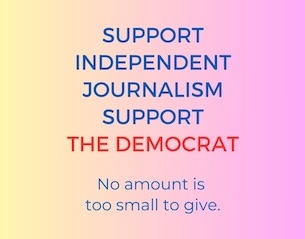- World
- How Plasma Therapy Went From Doubtful To Discontinued
How Plasma Therapy Went From Doubtful To Discontinued
The need for speed in coming up with counter measures may have seen it being inducted into the anti-Covid arsenal, but there is mounting evidence to show that plasma therapy is not quite the silver bullet it was hoped it would be. Experts have now pointed to why it could actually have a negative impact

The need for speed in coming up with counter measures may have seen it being inducted into the anti-Covid arsenal, but there is mounting evidence to show that plasma therapy is not quite the silver bullet it was hoped it would be. Experts have now pointed to why it could actually have a negative impact on the pandemic and India has removed it as a recommended therapy. So, what does the fall from grace mean for plasma therapy in the war against Covid and why did it take till now for officials to decide against its use?
What Does The Advisory On Dropping Plasma Therapy Mean?
While guidelines that the Indian Council of Medical Research (ICMR) has been issuing along with government officials are not mandatory for health practitioners to follow in the country, they represent the view of experts on the best practices to adopt for the treatment of Covid-19. The update against the use of plasma therapy is, therefore, not binding on registered doctors but suggests the course to follow based on the latest research.
Internationally, plasma therapy has had its share of sceptics and supporters although the view has veered towards discounting it as a viable line of treatment. In an interim guidance published in mid-February, the World Health Organisation (WHO) noted that “definitive evidence for safety and efficacy of convalescent plasma currently is lacking”. However, the UN body said it recognises plasma as an “experimental therapy that is appropriate for evaluation in clinical studies” or in pharmaceutical production. The idea being the same as when the therapy was first mooted against Covid-19: that more research and randomised clinical trials are needed to prove its efficacy.
How Did It Get Okayed In The First Place?
Think about the early days of the Covid-19 pandemic. Caused as it was by the hitherto unknown virus that was named the novel coronavirus, it was an infection which doctors and researchers were scrambling to understand even as cases raced through countries across the world. There were no treatments immediately available and drugs for other diseases, like remdesivir (originally developed to treat hepatitis C), dexamethasone (used to treat inflammation), etc. were being used to aid recovery for seriously ill patients. The desire to throw everything at the disease was understandable and that is where plasma therapy came in.
According to the journal Nature, “Virus-specific antibodies from recovered persons are often the first available therapy for an emerging infectious disease, a stopgap treatment while new antivirals and vaccines are being developed”. Antibodies in the plasma of those coming out of an illness may be found to contain high levels of specific antibodies that may give “passive immunity to recipients”, adds BMJ. And neither is such treatment new as plasma therapy is known to have been used even before the launch of vaccines and during the Spanish flu pandemic of 1918. Plasma therapy is not uncommon for viral infections like hepatitis B, rabies, etc.
Is India The Only Country To Have Authorised Plasma Therapy?
No. Plasma therapy for Covid-19 patients needing hospitalisation received emergency use authorisation by the US Food and Drugs Administration in August last year, when the American watchdog concluded that “the known and potential benefits… outweigh the known and potential risks”. Until then, FDA had been giving individual patient authorisation for the therapy. Several countries have experimented with plasma therapy but the consensus increasingly is that it is of no practical benefit to hospitalised Covid patients.
But before that, the Ministry of Health and Family Welfare in its Clinical Management Protocol for Covid-19 in June had said that convalescent plasma may be considered for “off label” use in patients with moderate disease who are not improving despite use of steroids. Centre’s guidelines included the need for matching of donor plasma along with the presence of a high level of neutralizing antibodies. It had further mandated that plasma be used only within the first seven days of the onset of symptoms.
What is “off label” use? It is simply a case of a drug or a therapy being used to treat a condition or disease for which it was not originally approved. It may sound alarming but is a common practice in medication. So, “off label” use can be prescribed if there is no approved drug to treat a said disease — which was the case with Covid-19 — or if all approved treatments have been tried with no success.
What Does The Evidence Say?
Conclusive proof that plasma therapy actually helps in treating Covid-19 is lacking and research has in fact shown that it has next to no impact in reducing the duration or severity of the disease. One such trial, called the ICMR-Placid trial, was conducted in India across 39 private and public hospitals and involved 464 adults. It held that convalescent plasma was “not associated with a reduction in progression to severe Covid-19″ or death.
The findings were echoed by RECOVERY, the biggest trial of the efficacy of convalescent plasma that was held in the UK among a group of more than 11,000 Covid patients. Participants were randomly split into two groups, one that received plasma therapy and the other that received the usual care protocol. This study, too, noted that plasma therapy had no discernible impact in patients hospitalised with Covid-19.
Remarkably similar proportions of people in the two groups progressed to more severe disease or succumbed to Covid-19, underscoring again the lack of clinical proof as to the efficacy of plasma therapy.
Source: Convalescent plasma in patients admitted to hospital with COVID-19 (RECOVERY) trial results published in www.lancet.com
But What Is Plasma? And How Is It Used In Treatment?
When patients recover from Covid-19, they build up antibodies that are designed to help their immune systems fight off future attacks of the same pathogen, in this case, the novel coronavirus. The residual plasma from their blood after the blood cells have been removed contains a liquid (plasma) and antibodies, explains US-based healthcare nonprofit Mayo Clinic. You may worry that this plasma, which is administered intravenously, may pass on disease, but the process is usually deemed safe and researchers further believe that since donors have recovered from the illness, they cannot infect other people.
Can Plasma Therapy Do More Harm Than Good?
That is the red flag that was raised by a group of medical experts and scientists in a letter to Principal Scientific Advisor K VijayRaghavan cautioning against the “irrational and non-scientific use” of convalescent plasma. It was pointed out that plasma therapy guidelines were not based on any existing evidence even as there are signs of a link between the emergence of variants that can beat off Covid-19 antibodies in immuno-suppressed people who receive plasma therapy.
The dropping of plasma therapy by the Centre comes on the heels of a decision by the US FDA in February this year to allow only plasma with high antibody presence for treatment of Covid cases that are in the early stages.
Read all the Latest News, Breaking News and Coronavirus News here











